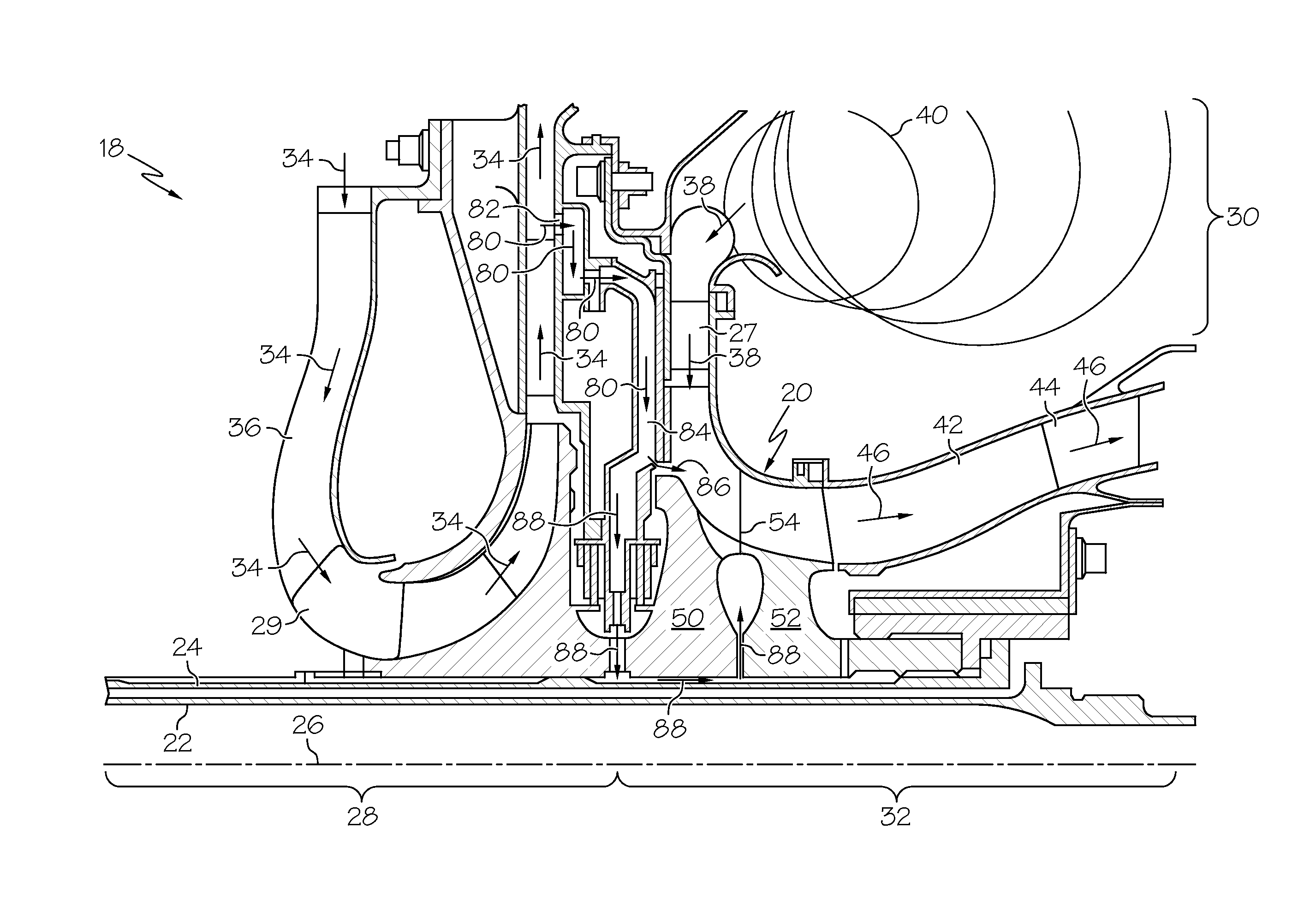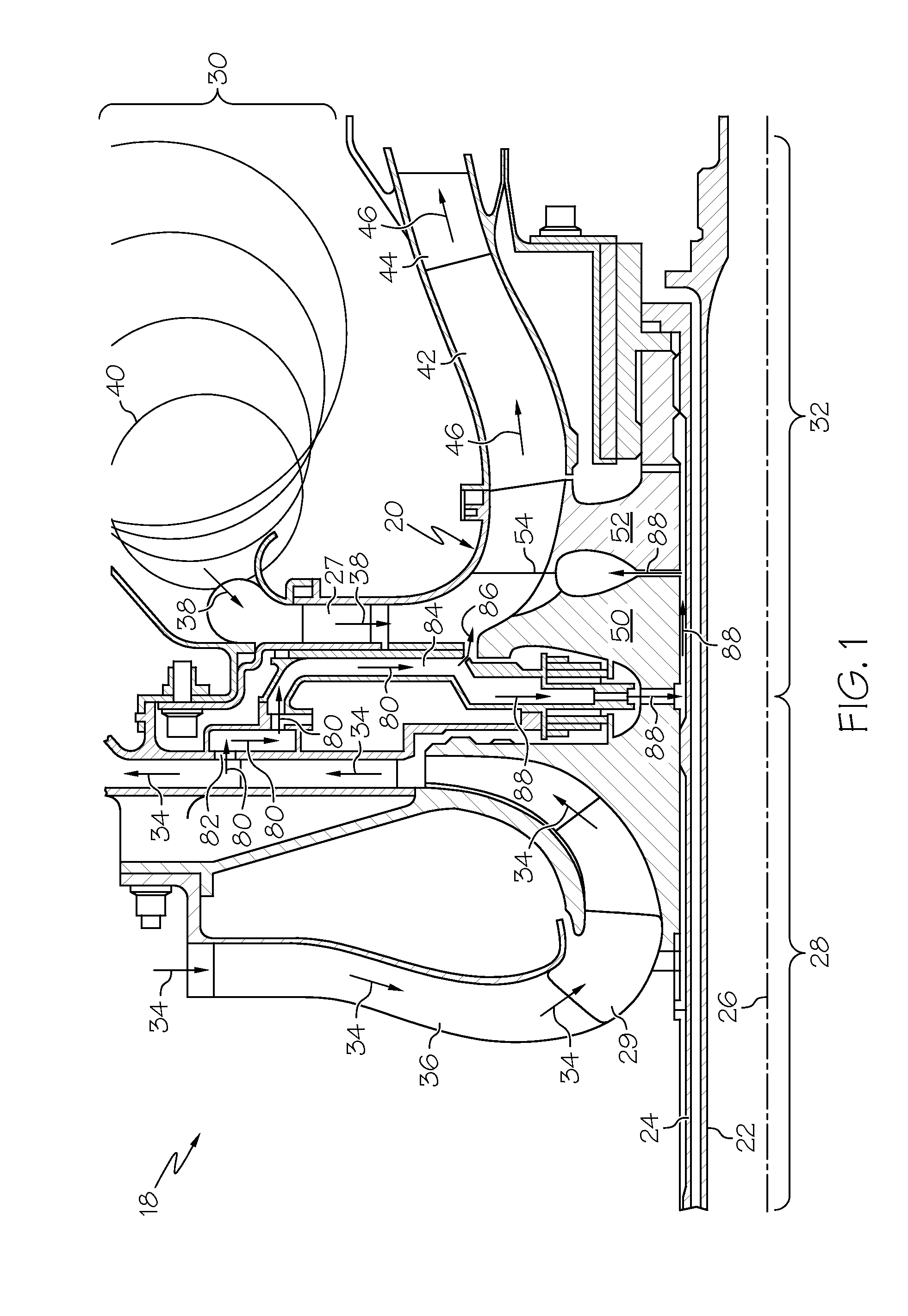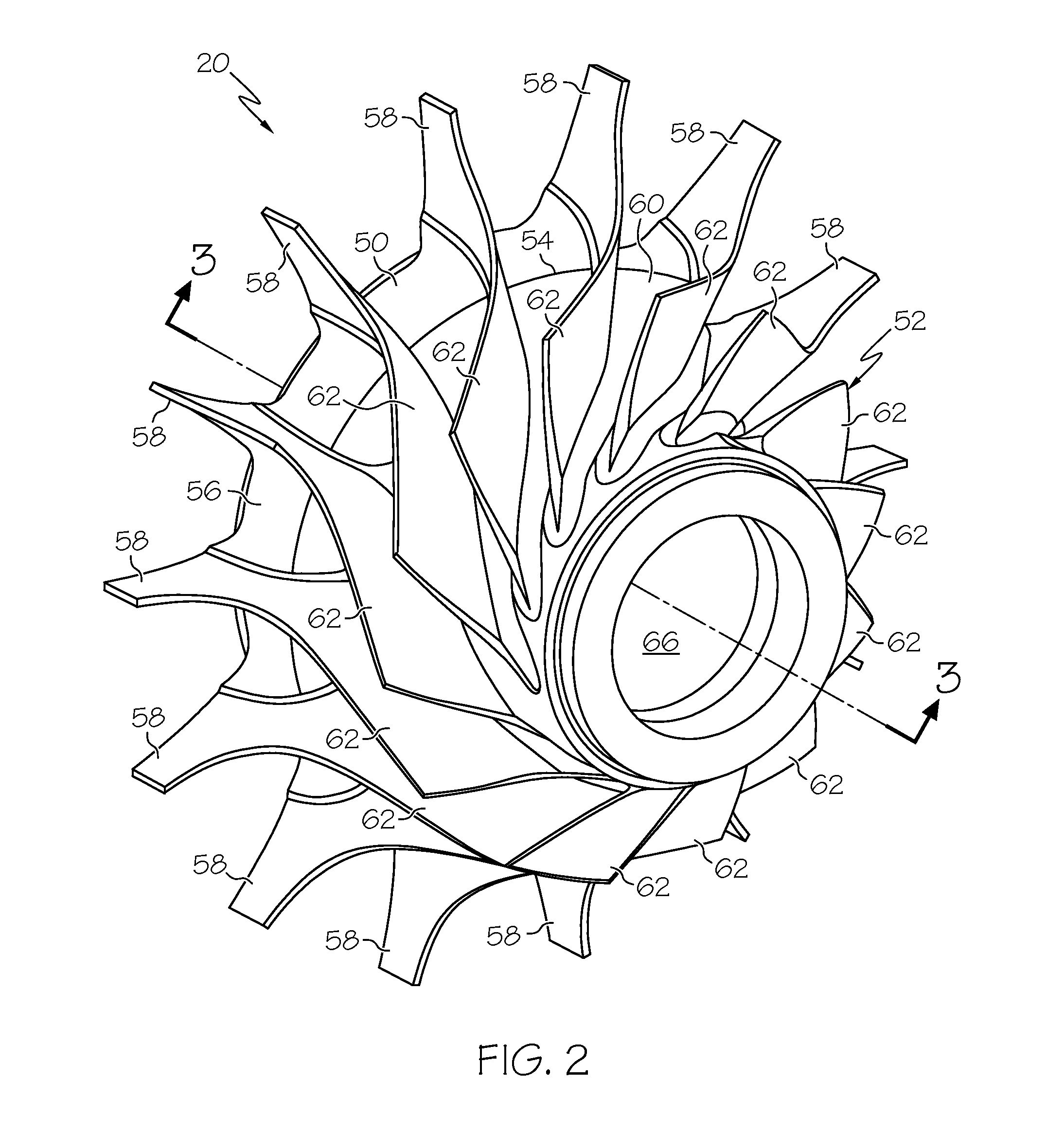Axially-split radial turbine
- Summary
- Abstract
- Description
- Claims
- Application Information
AI Technical Summary
Benefits of technology
Problems solved by technology
Method used
Image
Examples
Embodiment Construction
[0016]The following Detailed Description is merely exemplary in nature and is not intended to limit the invention or the application and uses of the invention. Furthermore, there is no intention to be bound by any theory presented in the preceding Background or the following Detailed Description.
[0017]FIG. 1 is a simplified cross-sectional view of a portion of a gas turbine engine (GTE) 18 including an internally-cooled, axially-split radial turbine 20, as illustrated in accordance with an exemplary embodiment of the present invention. As illustrated in FIG. 1 and described herein, GTE 18 is offered by way of example only to provide a convenient and non-limiting context in which an exemplary embodiment of radial turbine 20 can be described. It will be readily appreciated that embodiments of axially-split radial turbine 20 can be employed within various types of gas turbine engines including, but not limited to, other types of turbofan, turboprop, turboshaft, and turbojet engines, wh...
PUM
 Login to View More
Login to View More Abstract
Description
Claims
Application Information
 Login to View More
Login to View More - R&D
- Intellectual Property
- Life Sciences
- Materials
- Tech Scout
- Unparalleled Data Quality
- Higher Quality Content
- 60% Fewer Hallucinations
Browse by: Latest US Patents, China's latest patents, Technical Efficacy Thesaurus, Application Domain, Technology Topic, Popular Technical Reports.
© 2025 PatSnap. All rights reserved.Legal|Privacy policy|Modern Slavery Act Transparency Statement|Sitemap|About US| Contact US: help@patsnap.com



